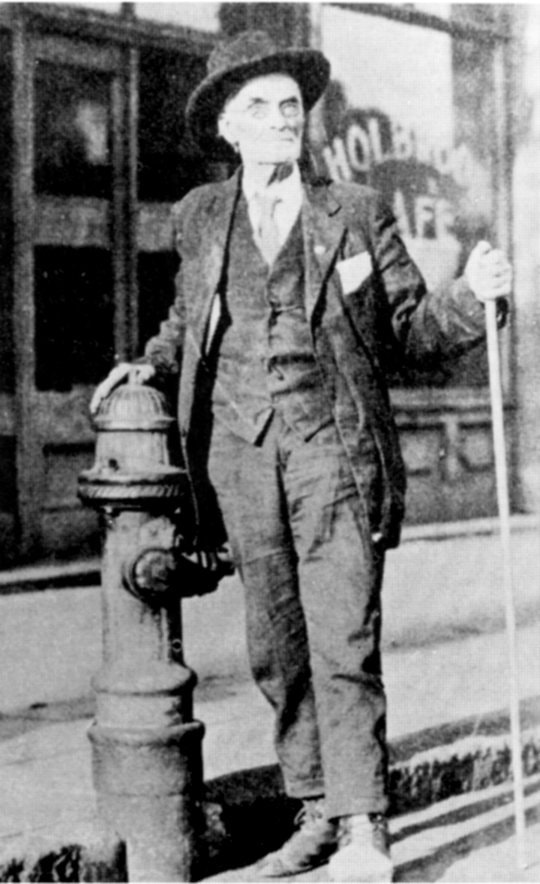Grand Forks is surrounded by mining towns that thrived for only a few short years during the mining boom around the turn of the century before disappearing.
However, no town was as short-lived as Volcanic City, a town which never really existed except in the imagination of A. R. “Volcanic” Brown, a prospector who was undoubtedly one of the most colourful characters to live in the Boundary Country.
Originally from New Brunswick, A. R. Brown became full of new-fangled ideas about capital and labour at an early age. He believed that banks should be abolished and that one day all the forests would be gone and aluminum would be the building material of the future. At the age of 32, he formed a union in the Michigan woods and led 15,000 loggers on a two-week strike, demanding a pay increase.
Brown first came to B.C. while the CPR was being built through the Rockies. After prospecting in the mountains, he made himself a dugout canoe and drifted down the Columbia to Colville. He was dubbed “Crazy” Brown by construction workers for this feat.
He returned to B.C. to climb forbidding peaks and to check and sample ore specimens, until he located the Volcanic Mine about 16 kilometres (10 miles) north of Grand Forks in the late 1880s. He proclaimed this to be a “mountain of pure copper” and boasted that “all the lead pencils in Grand Forks can’t total up its value.”
He swore that when his Volcanic Mine came into production, a different type of city would arise—one without any schools, churches or banks, and one that would be served by railroads coming in from the four cardinal directions. He even went as far to lay out the townsite of Volcanic City, but his rich claim turned out to be pitifully poor, and Volcanic City never grew beyond one building.
“Volcanic” Brown, as he was now known, was not deterred by this setback and went on to discover the Sunset Mine on Copper Mountain close to Princeton, which would develop into one of the biggest copper properties in the province. Volcanic sold his interest for $45,000 and celebrated the deal by getting himself a set of solid gold false teeth.
It was his custom to spend each summer going up the Pitt River, looking to strike gold. In June 1926, at the age of 77, he took his usual route up the Pitt, but failed to return in September as he usually did.
He was found in his cabin at the head of Seven Mile Creek, where he had been forced to stay when his feet froze while crossing the Stave Glacier. Gangrene set in in his left foot, and so Volcanic Brown ended up amputating his own toes using a knife dipped in boiling water.
Five years later, A. R. “Volcanic” Brown disappeared in the same area where he had cut off his own toes, leaving nothing behind but his tent, a cooking pot, an old single-barrelled shotgun, a little screw top jar containing about 11 ounces of coarse gold, and an enduring legacy as the man who almost imagined a fortune into existence.
